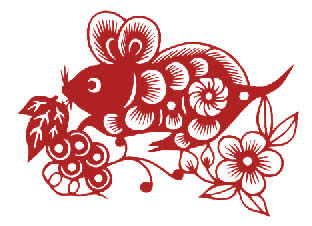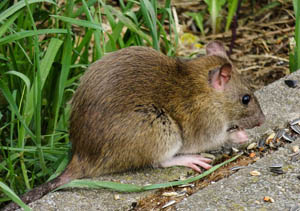| |
|
|
|
|
| |
back to Rat main |
 |
Rat
|
In the Chinese Zodiac, where each year of a 12 year cycle is represented by an animal, the Rat is the first animal. According to legend, the Jade Emperor once called the animals to come to him to become the animals of the Zodiac. The clever Rat convinced the Ox to let her ride on his back, and when they had almost reached the destination, the Rat jumped off and became the first animal of the Zodiac.
While usually translated as “Rat” for Western languages, the Chinese word 鼠 shu can actually also mean Mouse, which is basically just a different sized Rat.
People born in the year of the Rat are considered to be clever and quick thinkers, but they do not have great ambitions and are content with living a quiet and peaceful life. While they are kind and easily likable people who are quite sensitive, they may be easy to be misunderstood because of their lack of communication skills.
In traditional Chinese culture, rats were considered a sign of wealth and surplus. Because of their high reproduction rate, married couples at the time also prayed to them for children.

|
|
In western countries and modern times the Rat as a species is not valued in such a way, which is largely to blame on the “Black Death”, a deadly disease spread by fleas in the fur of rodents which caused the most disastrous epidemic in history in 14th century Europe, killing millions, and which identified rats largely as dirty and a carrier of diseases.
Found today throughout the world, after spreading along with civilization, the two main species of house rats, the brown and black rat have both emerged in Asia originally.
The brown rat or Norwegian rat is the ancestor of modern white lab rats, and its special skills are burrowing and swimming, while the black rat is a skilled climber. Besides these two most common species, the family of rats amounts to over 60, in all kinds of sizes and adapted to all kinds of environments and including a number of endangered species. They supposedly live on all continents of earth except Antarctica
While house rats have an average size between 20 and 25 centimeters, the size of other rat family members can vary from 12 centimeters to massive 82 centimeters.
The lifespan of house rats is usually 2 to 3 years, but is countered by their fast reproduction rate. Brown rats can reproduce after reaching an age of 3 months and females can can mate around 500 times in 6 hours and after a gestation period of less than one month give birth to a litter of up to 22 pups although 8–9 are more common.
 |
|
| |
Interestingly, the actual term for a group of rats is “mischief”, while in popular language usually the term “pack” is used.
In the wild, rats live in such groups, with the social system based on the size of the group. In areas of sparse population a single male lives in a burrow system with around 6 females, which each have their nests while in areas of dense population a group of rats is ruled by a single “despot” rat that socially dominates the group, while all male and female rats mate with one another without hardly any competition. Another typical behaviour in a rat mischief is for females to raise their offspring together.
Rats are omnivores, which means they technically eat anything, although they have a special taste for meat. Although basically scavengers, rats also occasionally kill smaller animals for food.
|
| |
Size: 20-25cm (without tail)
Weight: 0.5 kg
Lifespan: 2-3 years
|
| |
| return to top |
|
|
|



